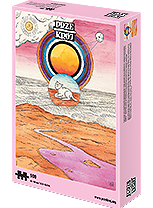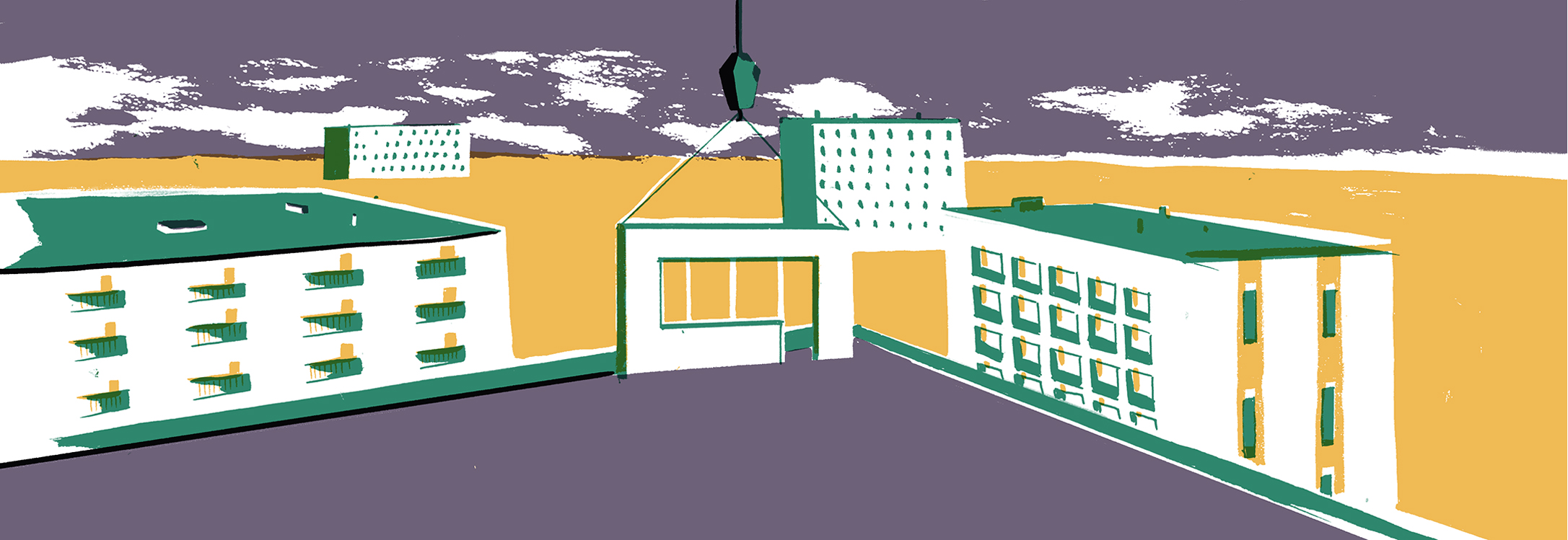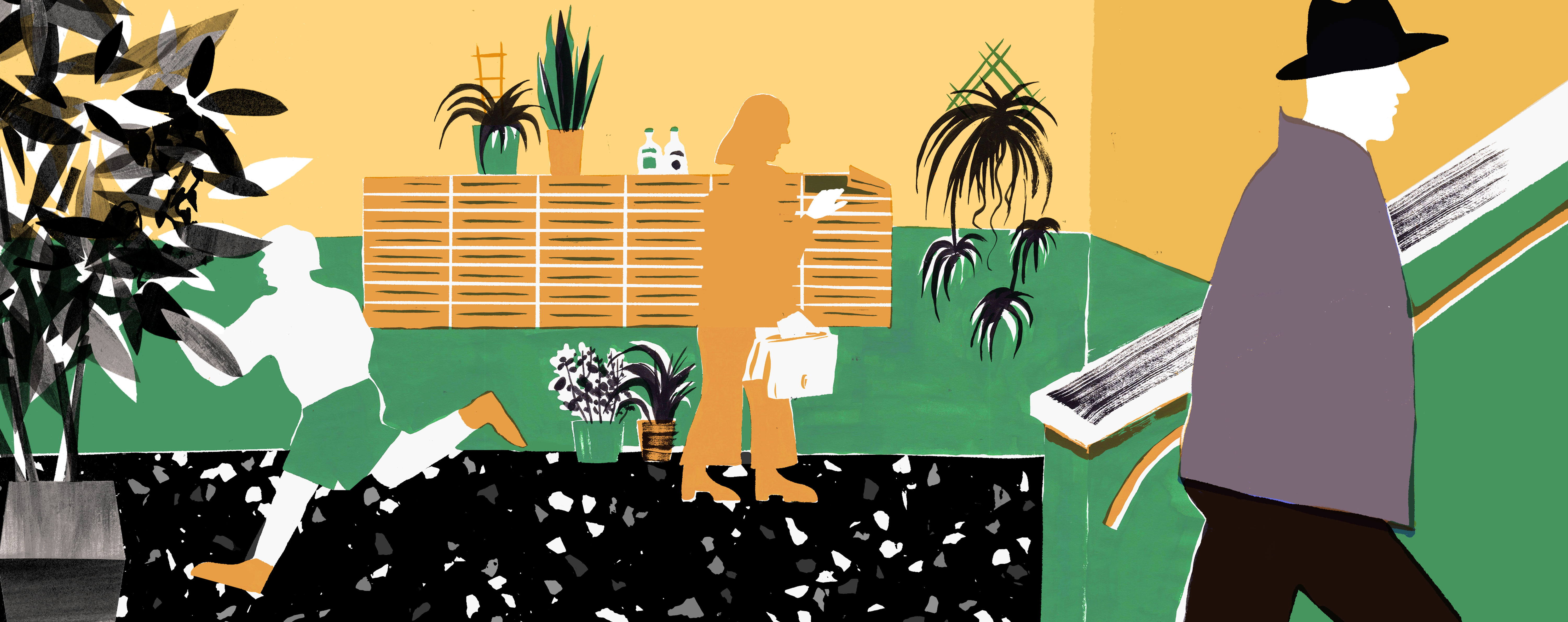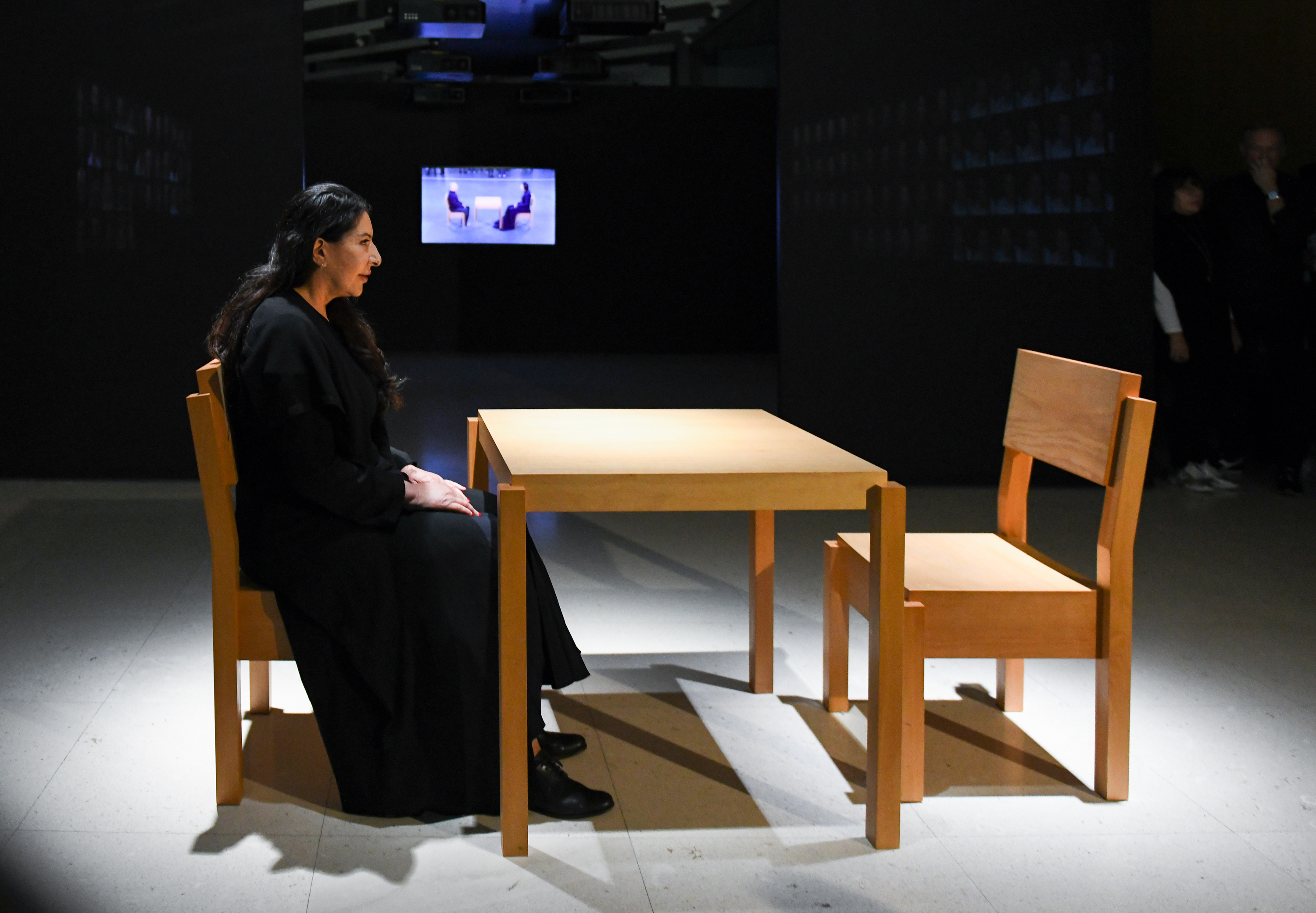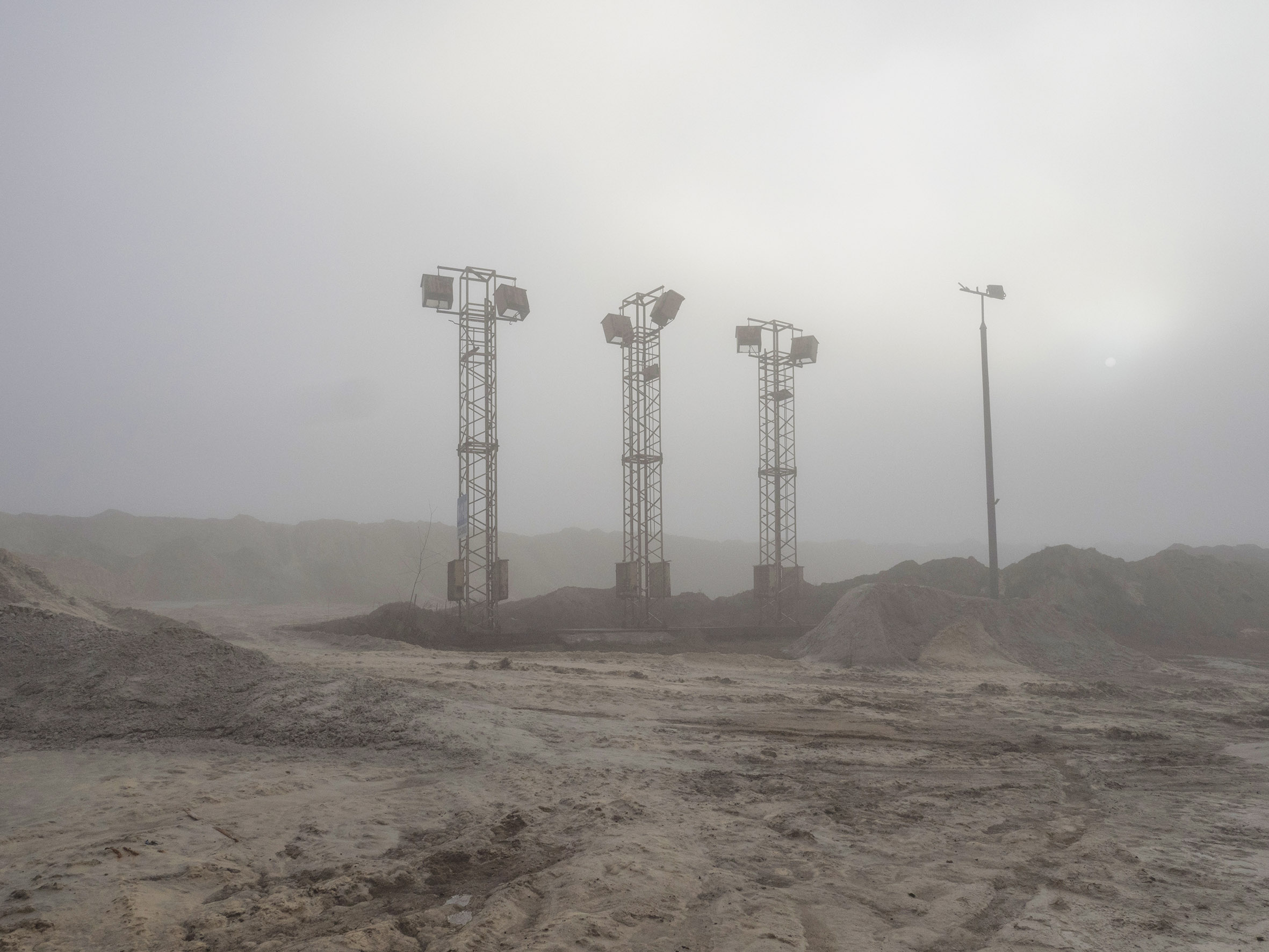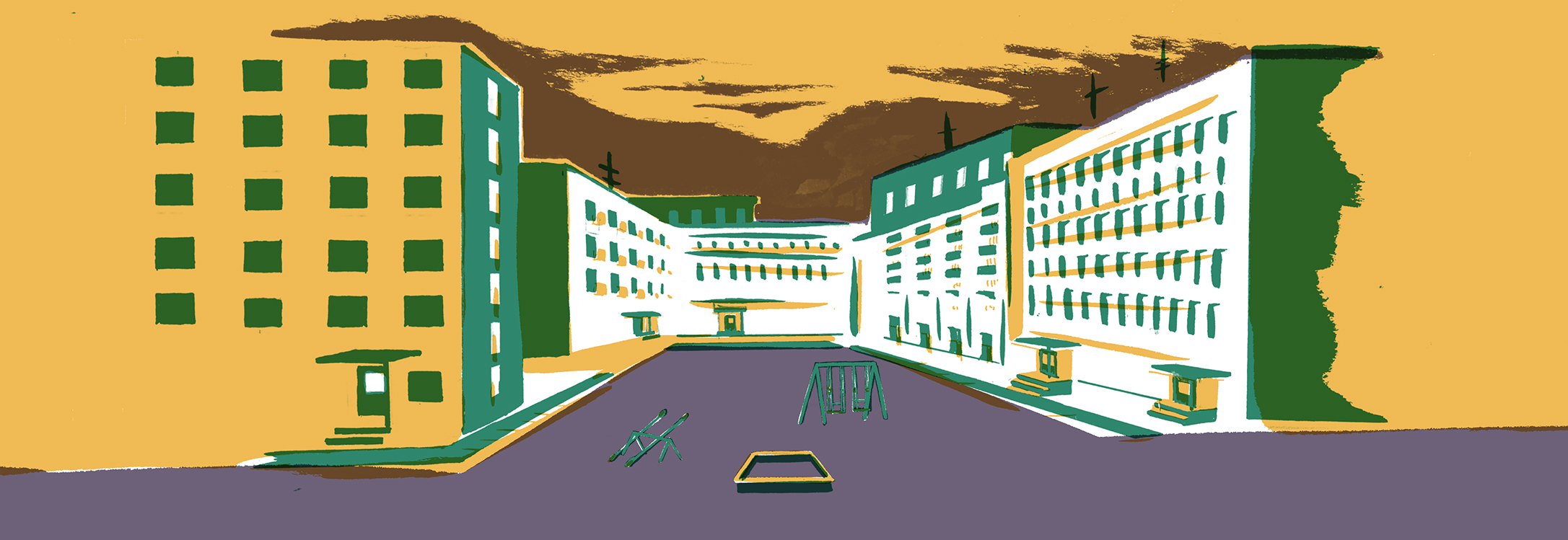
Conceived during the golden years of Yugoslav socialism, New Belgrade’s ‘Blokovi’ were designed to represent a radically modern, new way of living. The endless repetition of concrete blocks had to accommodate as many people as cheaply as possible, but this seemingly strict and cold state project hid all the ingredients for a perfect childhood.
Rarely would one associate grey concrete with warmth and a happy childhood, but these are exactly my first associations when I think of the brutalist buildings of New Belgrade. On top of that, I grew up during the Yugoslav war, international sanctions, and later even the NATO bombing of Serbia. But I have to say that all of those events seemed so distant and unreal. It was mostly something that you would see on the news while you waited impatiently to go outside and play. Our parents did a great job of protecting us from the harsh reality.
The ‘Blokovi’ I lived in were near the “end of the world”, as we called the place where the concrete stopped and our small childhood jungle began. In this contrast between the political reality and beautiful nature, life flourished.
The New Belgrade project
Conceived by top state architects, the project of New Belgrade had to reflect the ideals of a society of equals where the concept of unity and shared space was to be implemented. The plan, drafted in 1962, defined the urbanism of New Belgrade. It was the biggest project of Yugoslavia – when it was completed, it had to accommodate around 500,000 people.
But even the process of building this huge project was unique. More than 50,000 youth volunteers joined forces with professional workers and military personnel. There were more than 90,000 workers in total, and a whole new local culture emerged. They organized lots of concerts and sports events, which created many stories and urban myths that still exist to this day. Many of those who worked on the construction of the building were the same people who later got an apartment there. That’s just one of the things that sparked the communal way of life in this neighbourhood.
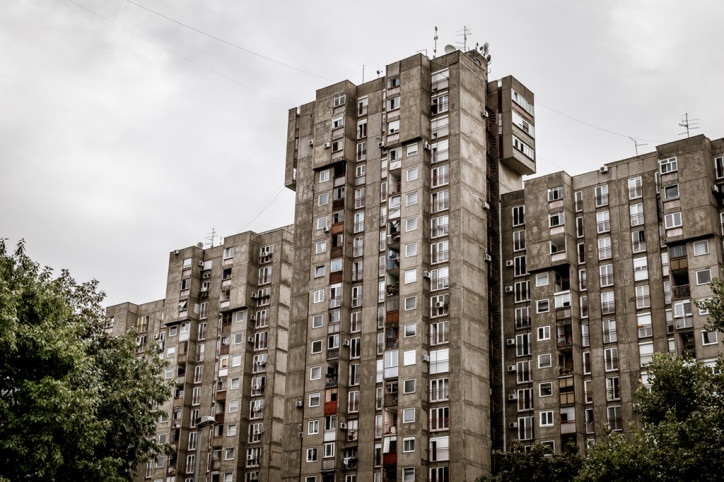
Most planned housing in Western societies appears as if in a TV commercial, with those markers of suburban perfection: a small private garden and your own driveway. Yet the design of the ‘Blokovi’ had a communal way of life in mind, which directed us to share large parks and playgrounds.
The main advantage of these concrete hives were the extremely big communities, which meant a lot of friends. Such large communities also gave a sense of security to our parents, who would let us go far from our buildings, even before primary school. Years passed until I realized how rare this was for my friends from other parts of the city. I would describe it as a mix of an urban environment with the feel of a close-knit community.
A happy childhood
Most of my non-Serbian friends have a hard time connecting my stories of a happy childhood with the war that was raging in Yugoslavia during the 1990s. But, as soon as we walked behind our building, we really felt free. We had our own little codes of conduct and our own hierarchy, mainly based on age or merit. All of this freedom created very fertile ground for our creativity and imagination. I get the impression that we were on a completely different planet every day, with new rules and new games. One day we fantasized that we were cowboys and Indians, another day we were famous athletes, then we were car mechanics, we owned toy stores, we planted gardens…
One of the many unforgettable adventures that illustrates the contrast between urban and rural childhoods was when the whole ‘pack’ went to the cornfields behind the ‘end of the world’. Even though we often went to the fields, this time was different, as the corn was ripe. I don’t know whose idea it was, but soon we figured we might be able to pick it and sell it in front of a local store for ice cream money. This was so funny to our neighbours, that we sold everything in less than 10 minutes, and we were soon enjoying our ‘hard-earned’ ice cream.
One of the funniest ideas that we had was introduced to our group from an unexpected source. For some reason, the American blockbuster movie Yankee Zulu was very popular among kids in Belgrade, and not because it was good or amusing. To this day I don’t know what the film is about, but it introduced a technique to throw mud balls with a stick. This idea worked perfectly, and it meant that not even our neighbours on the 15th floor were safe.
Sometimes, it really felt like we were a small tribe with its own customs and culture. We had our pack of dogs, which we fed while taking care of the puppies. One day, one of our beloved dogs passed away after a car accident on a road nearby. We called her Dona, and she was a beautiful and elegant black dog with white paws. It was emotional – all the kids cried – but then, without calling our parents, we got together and planned a funeral. We organized everything. The oldest kids dug the hole, everyone brought candles and prepared a short speech with our dearest memories of the dog.
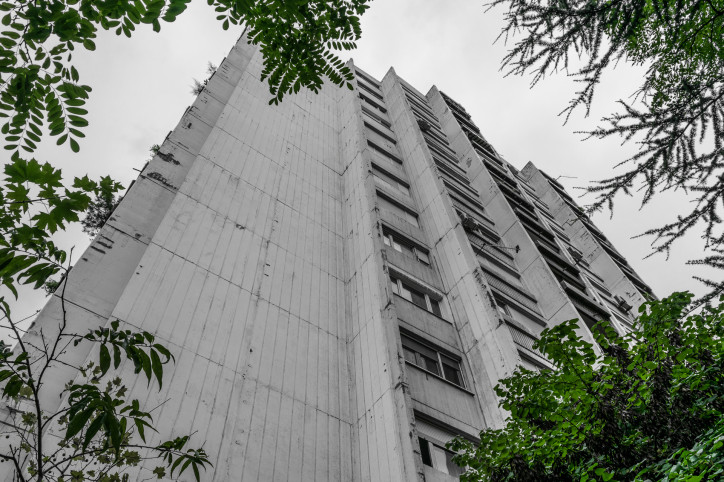
A brutalist oasis
That unique combination of brutal architecture and nearby nature had a huge impact on the way we grew up. We had the choice of both using the modern urban infrastructure and escaping on adventures.
The 1990s were politically very unstable – war was raging, hyperinflation was exploding – but it was primarily something that we saw on TV. Our group of friends were mostly fully carefree on our adventures outside. Within these brutalist concrete buildings, as the country was falling apart, we were living in some kind of a bubble, protected from the outside world.

